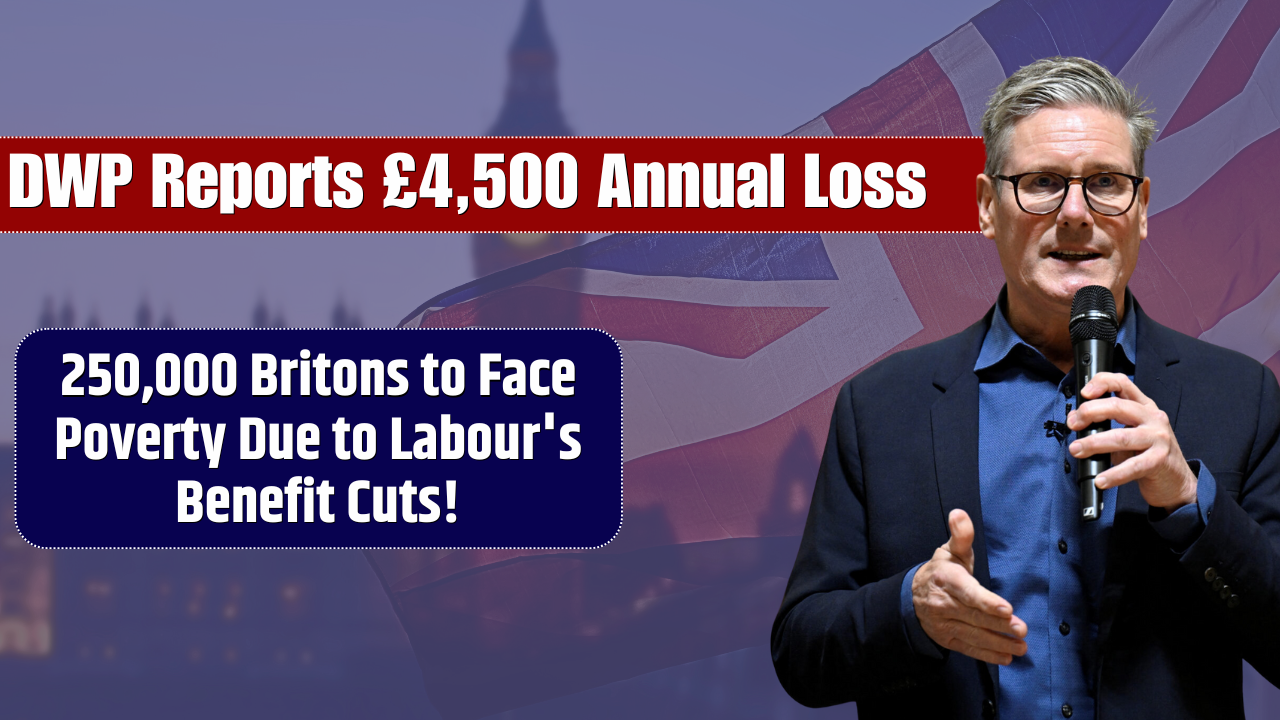The UK’s welfare system is at a critical crossroads. A new report from the Department for Work and Pensions (DWP) reveals that Labour’s proposed benefit cuts could result in a £4,500 annual loss per household for millions, pushing over 250,000 people—50,000 of them children—into poverty by 2030. While the changes are positioned as reform and modernisation, the real-world impact on vulnerable communities could be devastating.
Let’s unpack what these reforms mean, who will be most affected, and what’s at stake for the UK’s social safety net.
What Are Labour’s Proposed Benefit Reforms?
Labour’s benefit overhaul aims to reshape the welfare system to make it:
- More efficient
- Employment-focused
- Less reliant on long-term support
Their plan includes a £1 billion employment support scheme, focused on getting more people—particularly those with disabilities and long-term health conditions—into work.
The reforms would reportedly:
- Streamline disability benefit assessments
- Review Universal Credit eligibility
- Shift the narrative from support to self-sufficiency
While the government sees this as a path to economic participation, critics argue it’s more about budget reduction than improving lives.
Key Findings from the DWP Report
According to the DWP’s own projections, the proposed benefit changes could:
- Lead to £4,500 less in annual support for affected households.
- Increase poverty risk for 250,000 people by 2029–2030.
- Include 50,000 children, disabled people, and unpaid carers among the most impacted.
- Widen regional and demographic inequalities, especially in rural areas, among single-parent households, and low-income earners.
Some families could see losses of over £8,000 per year, particularly where multiple forms of support are affected.
Who’s Most at Risk?
| Group | Why They’re Vulnerable |
|---|---|
| Disabled individuals | May lose access to enhanced benefits due to stricter assessments and reduced support tiers. |
| Unpaid carers | Often excluded from full-time work and reliant on Carer’s Allowance. |
| Single parents | Disproportionately affected by childcare costs and job flexibility barriers. |
| Children in low-income homes | Directly affected by reduced household income, risking food insecurity and poor health. |
| Rural residents | Limited access to employment opportunities and public services. |
The Employment Support Scheme – Will It Help?
Labour’s proposed £1 billion employment support initiative is meant to help people transition into the workforce. Key goals include:
- Upskilling job seekers
- Advisory services for people with disabilities and health conditions
- Encouraging employers to hire more inclusively
However, experts argue this won’t address the core barriers:
- Inadequate workplace accommodations
- Lack of accessible transport and healthcare
- Few flexible or part-time roles for people with complex needs
- Persistent regional economic inequality
Critics Respond: Budget Cuts Disguised as Reform?
Welfare advocacy groups, such as the Joseph Rowntree Foundation, warn that these proposals are a thinly veiled austerity strategy.
“These changes will leave some households worse off by more than £8,000 annually,” said one senior advisor.
Opponents argue that:
- The changes prioritise cost savings over wellbeing.
- There’s no assurance of job availability for people pushed off benefits.
- The system risks punishing those who genuinely can’t work, rather than supporting them.
What This Means for the Future
If these changes proceed:
- Millions could see real-time reductions in their disposable income.
- Poverty rates could spike, reversing gains made since 2010.
- Public health outcomes may worsen, as financial stress leads to increased mental and physical health issues.
- The UK’s commitment to social equity and protection for the vulnerable could be called into question.
Real-World Example: Sarah, Unpaid Carer in Leeds
Sarah, a 55-year-old full-time carer for her adult son with autism, currently receives Carer’s Allowance and top-ups through Universal Credit. Under the proposed reforms:
- She could lose up to £4,800 annually if new assessment rules reduce her eligibility.
- Finding employment isn’t realistic due to her caregiving duties.
- Her household could fall below the poverty line, with rising costs and reduced support.
Sarah’s story mirrors thousands across the UK—families doing their best, now facing greater financial pressure.
Labour’s proposed benefit changes have ignited serious debate across the UK. While employment-focused reform sounds promising on paper, the human cost could be profound if these plans don’t come with parallel investments in accessibility, employment, housing, and healthcare.
As the 2025 election approaches, the future of welfare policy will be a defining issue, with far-reaching implications for economic inequality, poverty reduction, and the UK’s social contract.
FAQs
What’s the projected loss per household under Labour’s reforms?
The DWP estimates around £4,500 annually, with some losing more than £8,000 depending on their circumstances.
Who will be most affected?
Disabled people, unpaid carers, single-parent families, and children in low-income homes.
What is Labour proposing as a replacement?
A £1 billion employment support scheme focused on getting more people into work.
Are these changes guaranteed to happen?
Not yet. The reforms are proposals, and public and parliamentary response will shape what becomes policy.






